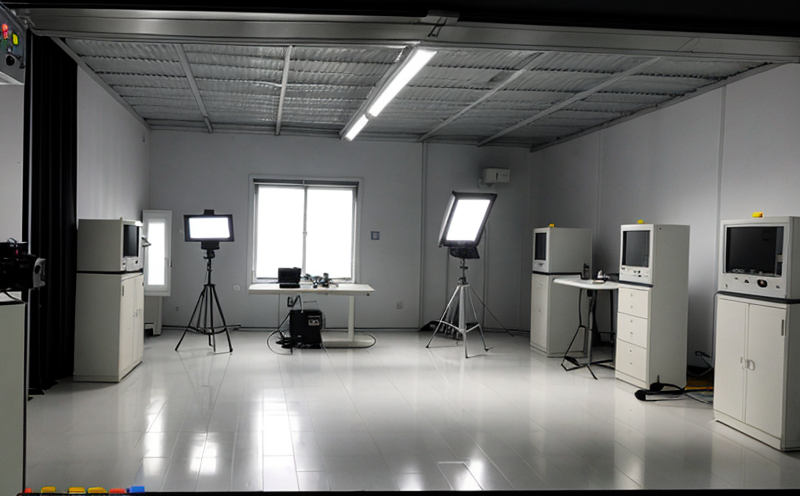EN 13201 2 Photometric Testing of Road Lighting Performance
The European Standard EN 13201-2 outlines the requirements and procedures for photometric testing of road lighting performance. This standard is crucial for ensuring that road lighting meets safety, visibility, and energy efficiency requirements in diverse environmental conditions. The primary purpose of this test is to evaluate the light distribution characteristics of luminaires used on roads, ensuring they meet specified criteria regarding uniformity, glare, and overall performance.
The testing process involves precise measurements using a photometer and integrating sphere setup. Specimens are typically mounted on a rotating platform allowing for 360-degree rotation around all axes, simulating real-world usage scenarios. The test conditions replicate typical road lighting environments, including variations in weather, temperature, and altitude. This ensures that the luminaire's performance is accurately assessed under realistic operating conditions.
EN 13201-2 specifies detailed procedures for measuring various parameters such as luminous intensity, distribution of light, color rendering index (CRI), and color temperature. These measurements are critical in determining whether a luminaire complies with the specified performance criteria set by this standard. Compliance with these standards is essential for road lighting manufacturers to ensure their products meet regulatory requirements while also enhancing safety and visibility on roads.
The testing process begins with careful preparation of the specimen, ensuring it is free from dust or debris that could affect measurement accuracy. Calibration of instruments prior to testing ensures reliable data collection. The luminaire is then mounted in a standardized position within the photometer setup. During testing, multiple readings are taken at different angles and distances to capture comprehensive light distribution information.
After completing all measurements, detailed reports are generated summarizing the results. These reports typically include graphical representations of light distributions along with numerical values for key parameters like CRI and color temperature. Compliance with EN 13201-2 is mandatory for manufacturers aiming to sell their products within the European Union or any other region adhering to these standards.
Understanding the importance of this standard goes beyond mere compliance; it reflects a commitment to road safety, environmental sustainability, and user comfort. By adhering to EN 13201-2, lighting manufacturers contribute significantly towards creating safer roads that enhance visibility during night-time driving conditions. This not only protects drivers but also pedestrians who rely on well-lit paths and crossings.
The standard's emphasis on glare control is particularly significant as excessive brightness can cause temporary blindness or discomfort for road users. Properly designed luminaires reduce this risk, contributing to safer travel experiences overall. Additionally, by focusing on energy efficiency through optimized light distribution patterns, EN 13201-2 helps promote sustainable practices within the lighting industry.
In summary, EN 13201-2 plays a vital role in ensuring that road lighting performs optimally under various environmental conditions. Through rigorous photometric testing procedures, it guarantees compliance with essential safety and performance criteria while promoting energy-efficient solutions for better road infrastructure development.
Why It Matters
The importance of EN 13201-2 cannot be overstated when considering its impact on road lighting design, installation, and maintenance. Proper photometric testing ensures that luminaires meet stringent quality standards, thereby enhancing visibility for drivers and pedestrians alike.
- Enhanced Safety: Ensures clear visibility under different weather conditions, reducing accidents due to poor illumination levels.
- Energy Efficiency: Promotes the use of energy-efficient lighting systems which contribute significantly towards lowering carbon footprints.
- Sustainability: Supports sustainable urban planning by integrating efficient lighting solutions into cityscapes.
Compliance with EN 13201-2 also benefits manufacturers by providing them with a consistent framework for product development and quality control. It fosters innovation within the industry, encouraging the creation of more advanced technologies that align perfectly with regulatory requirements.
In conclusion, adherence to this standard is not just about meeting legal obligations but also about contributing positively towards safer, greener cities where both humans and environments benefit from well-designed lighting systems.
Applied Standards
| Standard Number | Description |
|---|---|
| EN 13201-2 | Photometric testing of road lighting performance |
| ISO 9854 | General requirements for traffic signs and related facilities |
| IEC 60545 | Lighting measurement, Part 1: General requirements |
The application of these standards ensures that road lighting performance is evaluated comprehensively. The combination of EN 13201-2 with other relevant international standards like ISO 9854 and IEC 60545 provides a robust framework for assessing various aspects of road lighting.
Industry Applications
- Urban planning: Ensuring proper illumination levels in new developments to enhance safety and reduce accidents.
- Road construction: Facilitating the selection and installation of appropriate luminaires during highway or street projects.
- Maintenance services: Providing guidelines for regular inspections and replacements based on actual performance data obtained through photometric testing.
The results from EN 13201-2 photometric tests are invaluable tools used by lighting designers, engineers, and architects. They help in making informed decisions regarding the type of luminaires required for specific applications ensuring that all installations meet necessary safety standards.





